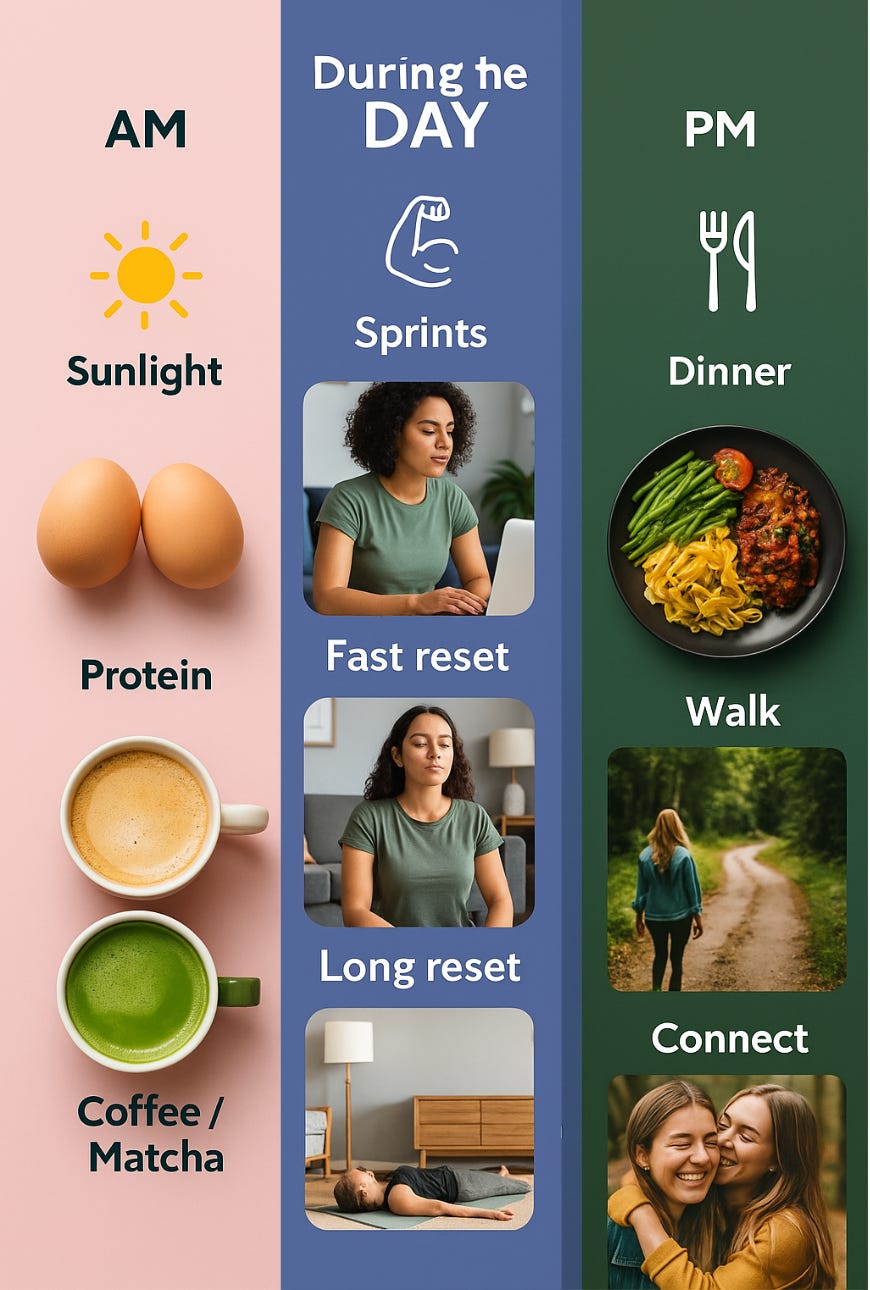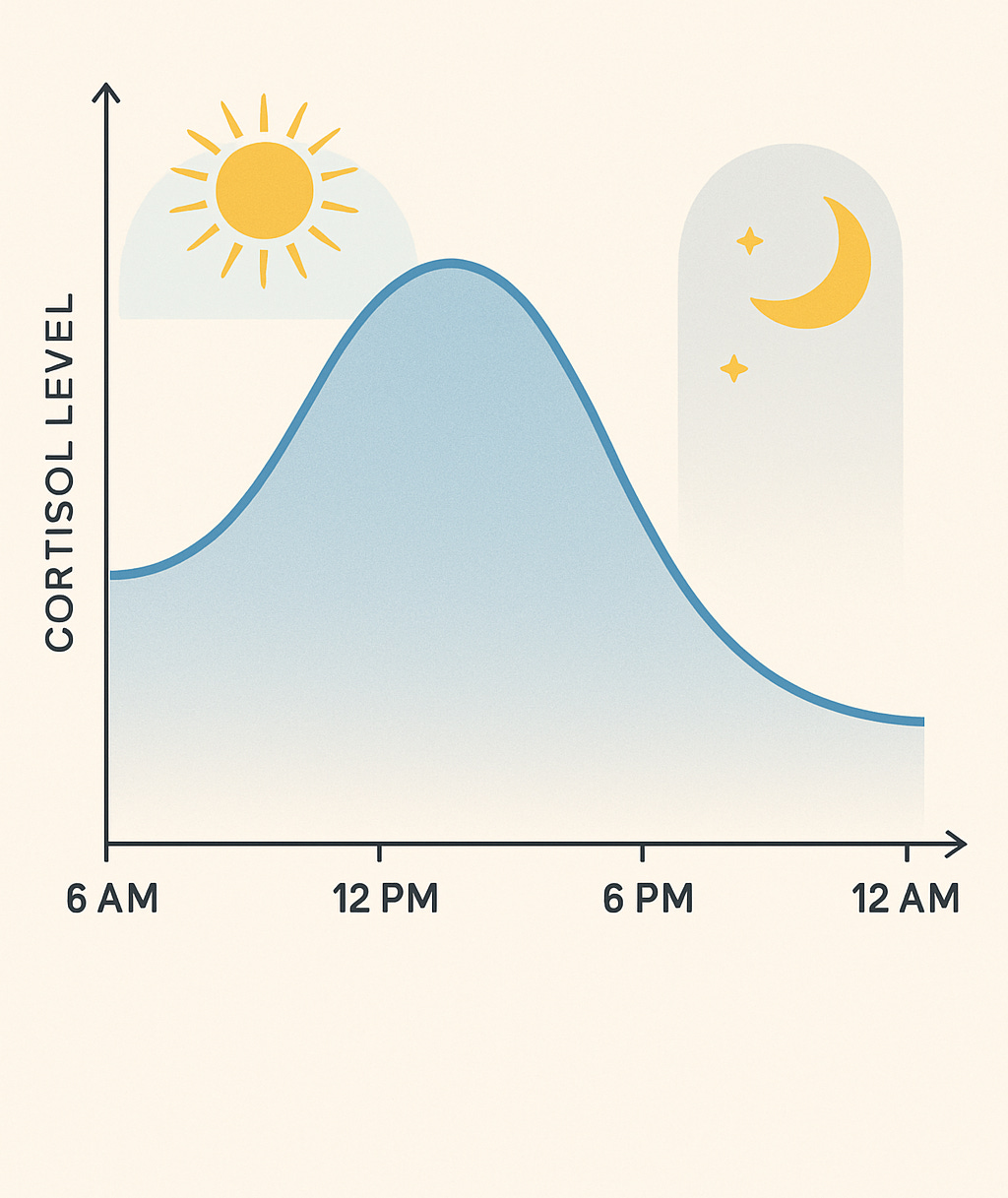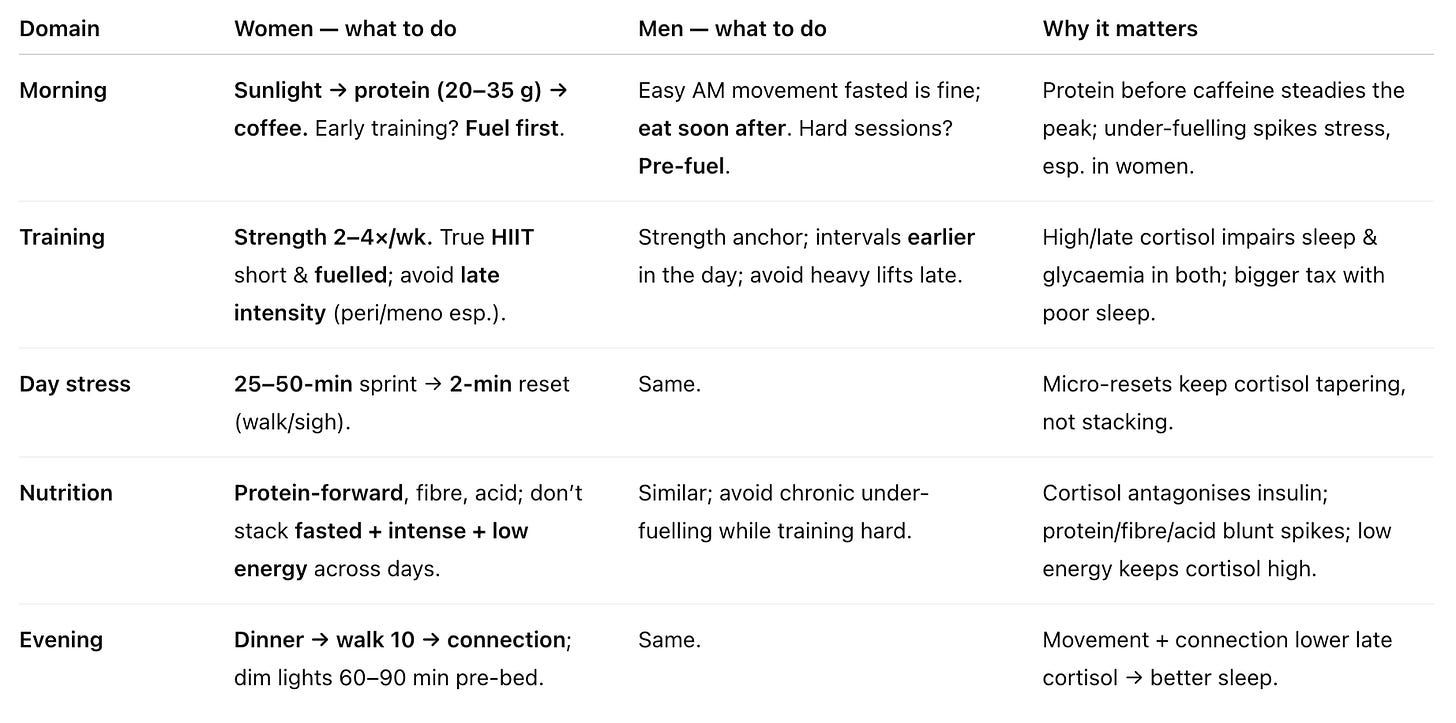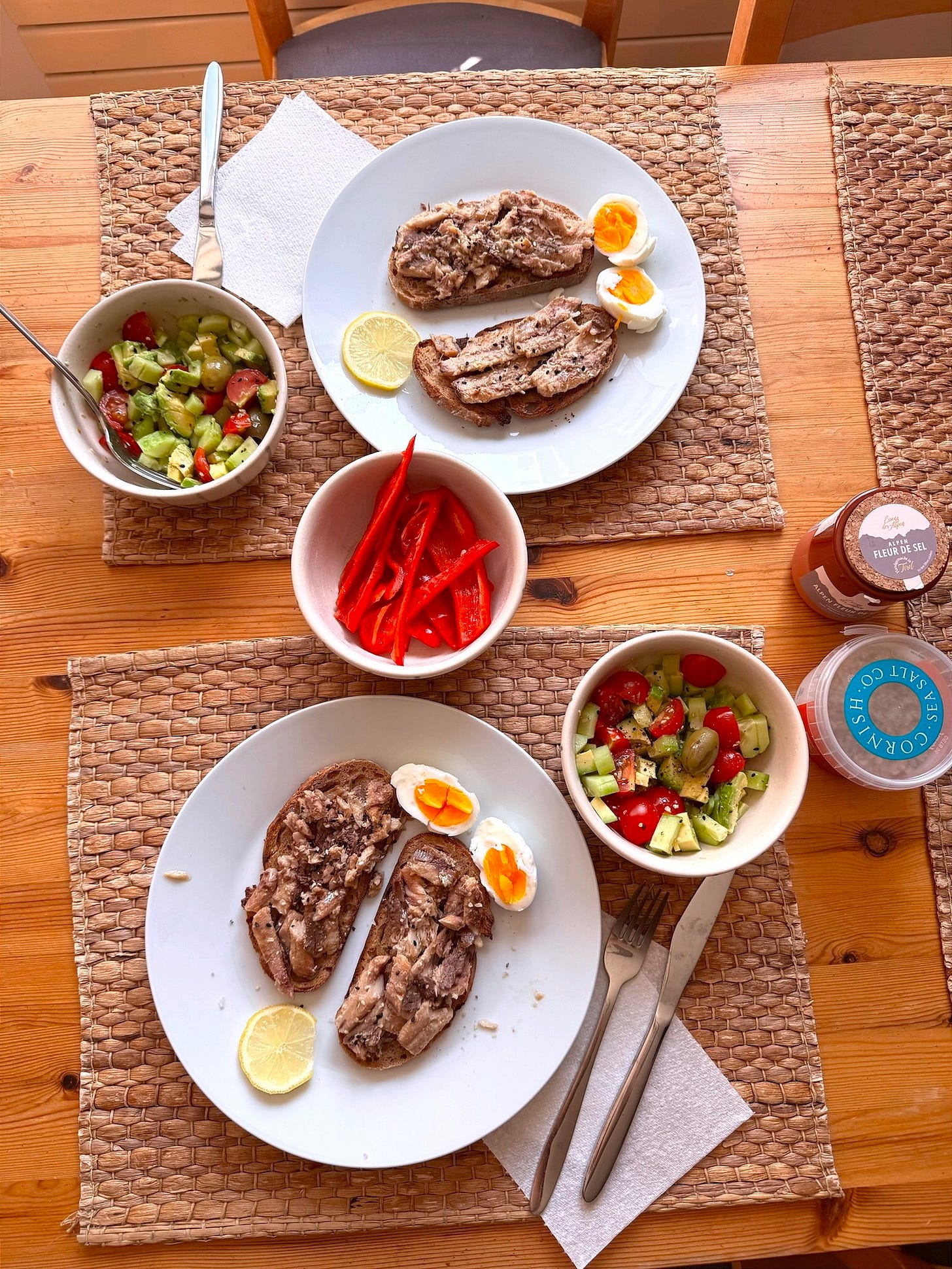Cortisol: Friend or Foe?
The timing playbook that turns a “stress” hormone into your metabolic ally.
Cortisol isn’t the villain. Wrecking its rhythm is
Edgy mornings, 2 p.m. crashes, wired-but-tired nights. Sound familiar?
If you read my ‘Breaking the Fast’ series kickoff, you know I spent years side-eyeing breakfast like a toddler, working out first, checking email inbox next, my brain sprinting by 8 a.m. This routine felt productive. What I didn’t know at the time was how badly it was wrecking my cortisol rhythm.
So when the science landed on my plate, I had a literal wake-up call.
My realisation was simple: Cortisol should rise in the morning and decline throughout the day [1][2]; my routine kept it high, late in the day.
I soon learned that my friends were experiencing the same after having coffee first thing in the morning. I’m not a coffee drinker, but I quickly understood why: cortisol is nature’s espresso shot; adding caffeine on top, it turbocharges it [3][4].
This leads to a mid-morning slump and an afternoon crash due to a drop in glucose levels, as cortisol and glucose work in tandem.
Translation: Cortisol isn’t the villain. Wrecking its rhythm is.
Try this instead: sunlight exposure → protein first → then coffee in the morning; dinner → walk 10 +connect , in the evening.Share your results in comments.
Harness cortisol: sequence to a steadier day
Now that we know cortisol is not the villain, let’s focus on how to support its natural rhythm.
Run this sequence today:
AM — Sunlight → Protein → Coffee / Workout
20–35 g protein with your first meal within 30–90 min of waking.
Coffee/workout ideally after you’ve eaten. Ride the peak; don’t pile on it.
DAY— Sprints → Reset
Work in 25–50-minute sprints.
Between sprints, take a 2-minute reset: hallway loops or a double-exhale physiological sigh [11].
(Deeper reset) between long working blocks: 10-minute Yoga Nidra.
PM — Dinner → Walk 10 → Connect
Plates down, muscles on: 10 minutes (walk outside, take the stairs, or living room loops) [8][9].
Add connection (call/chat/dishes together) to tilt your nervous system toward rest and digest.
Weekly extras (if you want more)
2-3 x 10-12 minutes of sauna sessions, followed by cold showers, can help lower cortisol levels [12][13]. I wrote an article on this hot/cold exposure here.
Exercise - I personally go for 3 to 4 weight training sessions/week, combined with 1 or 2 HIIT sessions/week. Here’s a HIIT example by Dr. Stacy Sims.
Try one from each row today and tell me in one sentence: Which changed your 10 p.m.?
Friend in pulses, foe in floods.
Here’s your 101 on Cortisol biology.
The HPA axis (hypothalamus → pituitary → adrenals) raises cortisol before you wake; a short cortisol-awakening response (CAR) fires in the first hour [1][2].
Cortisol mobilises fuel, sharpens attention, and briefly antagonises insulin [5][6]—a good thing early in the day.
Like other hormones in the body, it follows the circadian rhythm and is also influenced by sleep, food intake, and physical activity.
Pushing it late in the day by stacking caffeine, fast carbs, or screens on top leads to jitters, crashes, and poor sleep [14][15].
Using timing levers (light, protein before caffeine, post-meal movement), it becomes a tool.
Conclusion: Cortisol itself isn’t good or bad—wrecking its rhythm is.
Women vs men: Same hormone, different physiology
As Dr. Stacy Sims emphasised in countless podcasts, women and men run similar hardware on different settings. She even trademarked the phrase “women aren’t small men”.
This matters because oestrogen/progesterone modulate the body’s stress response; in peri/menopause stress or poor sleep can push cortisol levels higher later in the day [16][17][18].
Action: Pick your column; run it for a week. See what changes.
Let’s see how we can put this knowledge to use with two “just assemble me like a Lego” breakfasts.
Protein first, coffee after
Useful for busy mornings, when you want to ensure you’re well-fed and have your cortisol and glucose levels remain stable throughout the day.
The first option is sardines on sourdough bread with your choice of herbs, accompanied by a lemon juice and olive oil drizzle, and boiled eggs, along with a salad of your choice.
The second one is a recipe for mashed peas on toast that I am sharing below.
Serves:2
Cooking time: 7-8 minutes
Ingredients for the mashed peas
200g frozen green peas
1 1/2 tablespoon tahini
Juice of half a small lemon
Salt and pepper to taste
1/2 teaspoon of za'tar herb mix
A drizzle of olive oil
1 teaspoon ghee for sautéing the peas
Method
Place the frozen peas in a pan over medium heat with the ghee and sauté for 3-5 minutes, until they begin to thaw.
Add the za'atar herbs, season with salt and pepper, then continue to sauté for an additional 2 minutes.
Use a hand blender to mix the peas, then add the lemon juice, tahini, and a drizzle of olive oil. Make sure you leave some whole peas for texture.
Place the mixture on toasted sourdough bread, and then add prosciutto or other cured meat of your choice. Halloumi makes for another excellent option due to its contrasting taste.
Enjoy with a side salad or pickles.
As always, thank you for reading Salt, Pepper, Stories. If this post helped you, please give it a heart, comment, or share it with someone who needs the tools to harness the power of cortisol.
xx, Ana









